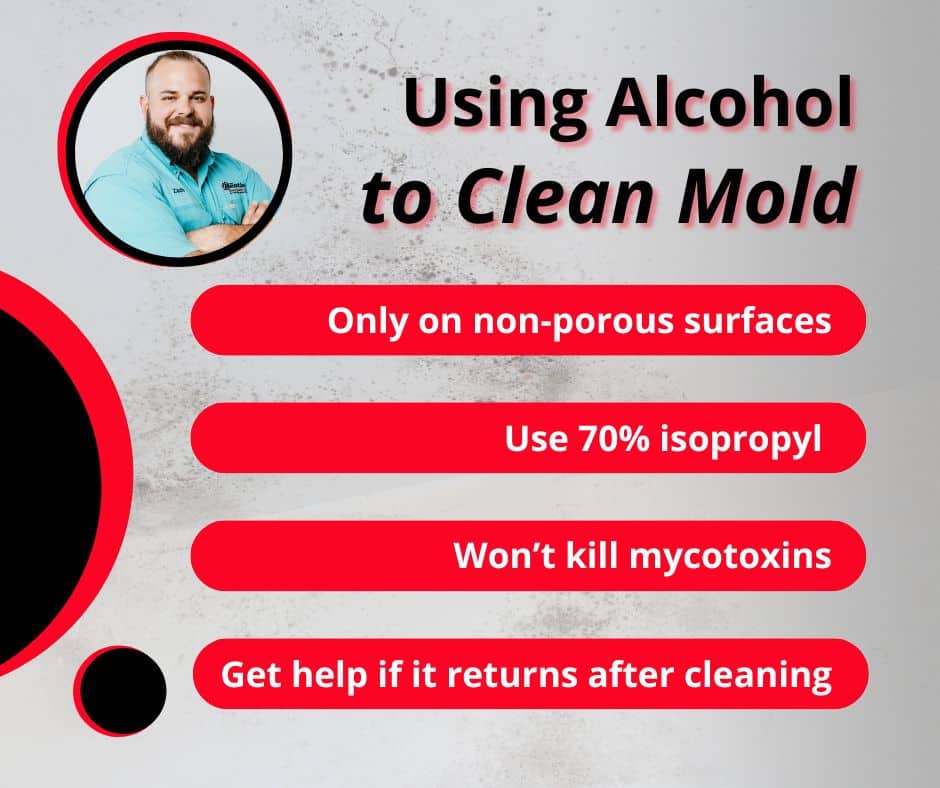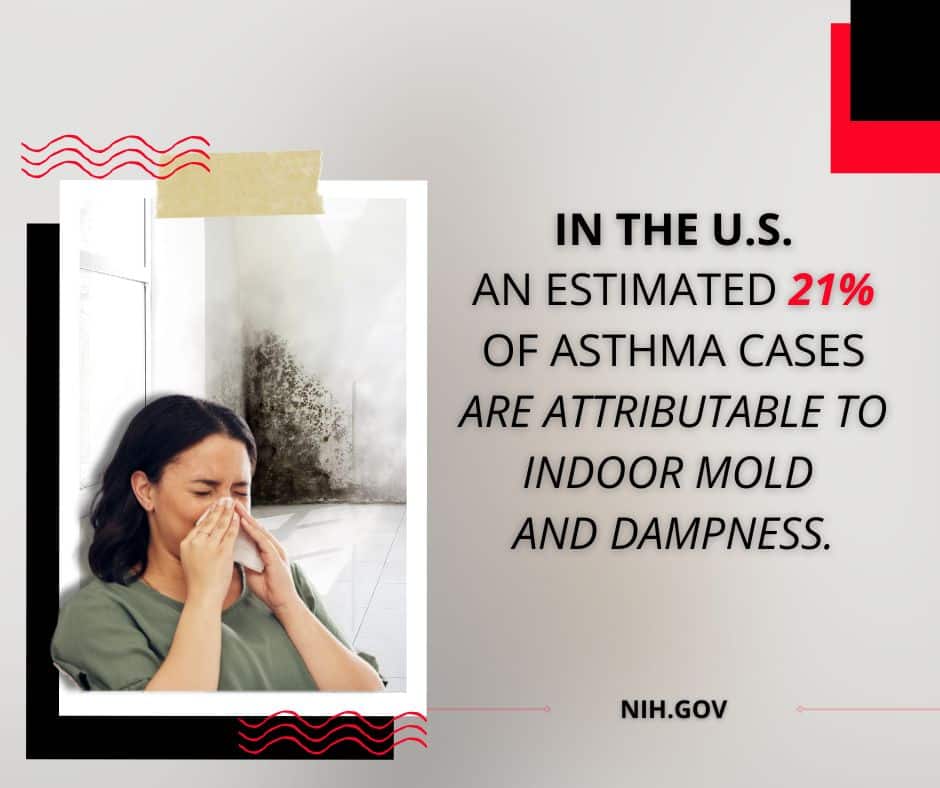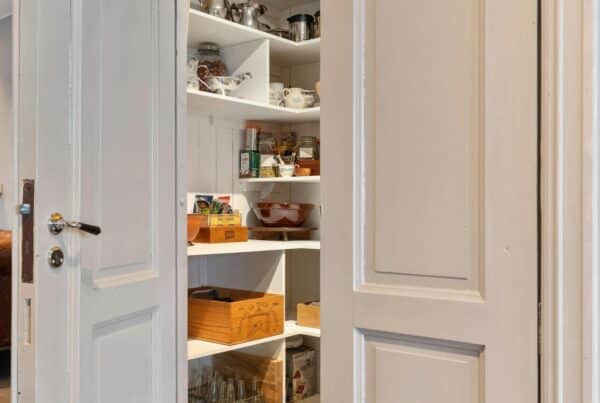
If you’ve ever found mold in your home, your first thought was probably, “How do I get rid of this fast?” A quick search might lead you to rubbing alcohol as a DIY solution. It’s cheap, easy to find, and seems simple enough to spray and wipe. But does alcohol actually kill mold, or does it just smear it around and make things worse?
In this guide, we’ll break down what alcohol does and doesn’t do, where it works, and when it’s better to use something else. We’ll also cover what causes mold in the first place, how to stop it from coming back, and what to do when you need a professional opinion.
How Alcohol Affects Mold
Isopropyl alcohol, also known as rubbing alcohol, can kill some mold on non-porous surfaces. These are hard, smooth surfaces that don’t absorb moisture, like glass, metal, plastic, sealed tiles, and some countertops.
When sprayed directly on mold spores, alcohol dries them out and disrupts their growth. It also evaporates quickly, making it useful for quick cleanups where water-based cleaners aren’t ideal. It’s often used in a format of roughly 70% alcohol mixed with water.
However, alcohol has two big limitations:
-
It only works on the surface.
-
It doesn’t prevent mold from returning.
Alcohol does not kill spores or mycotoxins. So, if mold has grown into a surface, alcohol won’t be able to kill or even reach it.

Why Mold Keeps Coming Back
Mold is a living organism that thrives in moist, dark spaces. It spreads by releasing spores that float through the air and settle in damp areas. Once it finds a home, especially in places like bathrooms, basements, or around leaks, it starts to grow into the material.
Porous surfaces like…
-
Drywall
-
Wood
-
Carpet
-
Ceiling tiles
-
Insulation
…can trap moisture and give mold a place to hide. In the U.S., an estimated 21 percent of asthma cases are attributable to mold and dampness indoors.
Even if you clean the surface, mold may still be active inside the material. That’s why surface-level cleaning with alcohol isn’t enough for most household mold problems.
Is It Ever Okay to Use Alcohol on Mold?
Yes, but only in specific situations. Alcohol can be useful for…
-
Light mold spots on hard, sealed surfaces
-
Small personal items like plastic tools, accessories, or containers
-
Cleaning up mold after it has been removed by other means
Just don’t expect it to solve larger issues or mold that has sunk into walls, ceilings, or floors.
Also, never mix alcohol with other cleaners like bleach or vinegar. Doing so can create dangerous fumes or reduce the effectiveness of both.
Safer and More Effective Mold Cleaners
For deeper or recurring mold problems, here are better options:
-
White vinegar: Slightly acidic and better at killing mold than alcohol. It can penetrate more deeply and has residual effects.
-
Hydrogen peroxide: A powerful mold killer for both porous and non-porous surfaces. It bubbles on contact, which can help lift mold from crevices.
-
Soap and water: A good option for regular cleaning to remove dirt and some mold spores on hard surfaces.
-
Commercial mold removers: These are designed for home use and often include ingredients that can reach deeper than vinegar or alcohol.
-
Baking soda and water: Safe, mild, and great for deodorizing musty smells caused by mold.
-
HEPA vacuums: Helpful for removing dried mold spores from carpet, furniture, or flooring without spreading them through the air.
Each of these solutions has different strengths. The best choice depends on the material, how deep the mold is, and whether the area stays damp.

How to Keep Mold from Coming Back
The most important part of mold cleanup isn’t the cleaning product. It’s removing the moisture source. Mold only grows when there’s excess moisture, so if the area stays dry, mold can’t return.
Steps to prevent mold regrowth:
-
Fix any plumbing leaks or roof issues right away
-
Run bathroom fans or open windows after showers
-
Use a dehumidifier in damp areas like basements
-
Make sure attics and crawlspaces are properly ventilated
-
Keep indoor humidity below 60%, ideally around 40%
-
Don’t ignore small water stains. Check for hidden leaks early
Cleaning the surface is just one step. If you don’t address the cause of the moisture, mold is likely to come back.
Other Mold Questions You Might Be Asking
How can I tell if mold has spread behind the wall?
Look for signs like soft or bubbling drywall, musty smells, or discoloration that keeps getting worse. These are often clues that mold is growing where you can’t see it.
Is black mold more dangerous than red, green, or white mold?
Some types of black mold release mycotoxins, but color alone doesn’t tell you how harmful it is. Any mold can trigger allergies or worsen asthma. If you’re unsure, have it tested or inspected.
Can I paint over mold to hide it?
No. Painting over mold will not kill it. It may look better temporarily, but the mold will keep growing underneath and can eventually cause the paint to peel or bubble.
Can mold damage my home’s structure?
Yes. If left untreated, mold can weaken drywall, wood framing, and flooring. It may also lead to rot, which can be expensive to repair.
When to Call a Professional
If you’ve tried cleaning and the mold keeps coming back, or if it covers more than 10 square feet, it’s time to bring in a professional. You should also call someone if:
-
The mold is growing in your HVAC system
-
It has spread across walls, ceilings, or floors
-
You’re not sure where the moisture is coming from
-
You or someone in your home is getting sick
A qualified home inspector can assess the situation, check for hidden issues, and guide you on the safest next steps. In some cases, full remediation may be needed to protect your home and health.
Final Thoughts
Rubbing alcohol might seem like a simple way to kill mold, but it’s not a complete solution. While it can kill mold on hard surfaces, it doesn’t soak into porous materials and won’t stop mold from returning. That’s why it’s important to clean properly, fix any moisture issues, and know when to get help.
If you’re unsure what to do next, Bentley Home Inspection can help you understand the risks and recommend your next step forward with confidence.



